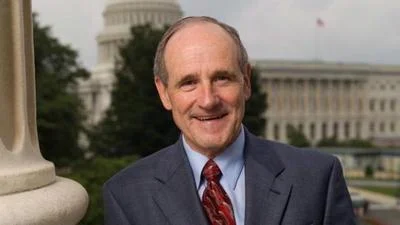With the House’s passage of the One Big Beautiful Bill Act, the Senate is preparing for a procedural gauntlet that will shape the future of the sweeping budget legislation. Senate leadership, committees, and parliamentarians are now entering what insiders refer to as the “Byrd bath”—a grueling review to ensure the bill complies with the strict rules governing the reconciliation process.
The Process Ahead
The House bill is likely to be replaced with a Senate-drafted substitute, which can be constructed either through traditional committee markups or by leadership-led negotiations with the relevant Senate committees. Committee staff will bear the brunt of the work drafting policy in line with budget instructions, vetting language with the Senate parliamentarian, and redrafting it as necessary to avoid violations of the Byrd Rule.
The Byrd Bath
The rule limits what can be included in a reconciliation bill. Provisions must be directly tied to budget changes, avoiding “extraneous matter” such as policies that don’t impact federal spending or revenue.
The Senate parliamentarian has established a rigorous and time-consuming process for the review where the majority and minority may present memos and arguments for and against specific provisions. Ultimately, the parliamentarian will issue guidance on what is permissible under the rules. Skipping this pre-vetting risks chaos on the Senate floor, as real-time challenges could derail key parts of the bill.
Once the Senate version is finalized and cleared through Byrd Rule scrutiny, the Senate will formally begin debate on the package, capped at 20 hours with no limit on amendments. Senators from both parties may unleash a barrage of proposals—an event known as “vote-a-rama”—that tests party discipline and can reshape the bill on the floor.
Importantly, if Senate committees skip formal markups, the threshold for whether an amendment is “germane” to the bill is relaxed, making it easier for senators to introduce unrelated or controversial proposals during floor debate.
House-Senate Collision Course?
If the Senate passes its amended version, the House could accept the Senate’s changes and send it to the President’s desk, or the two chambers could enter a formal conference committee to resolve differences. If the latter occurs, conferees must tread carefully. Any provision ruled to violate the Byrd Rule can be struck on the Senate floor, requiring further votes and risking delay.
Underlying the legislative wrangling is a high-stakes disagreement over budget assumptions. The bill assumes an official scoring baseline that assumes the permanent extension of the 2017 Tax Cuts and Jobs Act (TCJA), reducing projected revenues by $3.8 trillion over the next decade. This approach favors Republican policies to extend tax cuts and spend more on national defense, and blunts any Democratic challenges based on deficit impacts.
Democrats, however, are expected to demand alternative scores from the Congressional Budget Office and the Joint Committee on Taxation—particularly to test whether the Finance Committee’s tax proposals exceed allowable deficit increases or violate Byrd Rule constraints on outyear deficits.
While the parliamentarian can offer guidance on these disputes, authority over the numbers rests with the Budget Committee Chair, creating a procedural clash that could fuel further partisan friction. The presiding officer in the Senate—which could be Vice President J.D. Vance if needed—maintains ultimate authority to over-rule the Parliamentarian.
Capitol insiders expect the reconciliation process to stretch into late June or beyond. Given the bill’s size and ambition—and the thin voting margins in both chambers—every sentence of legislative text and each procedural ruling could determine its fate.
For now, all eyes are on the Senate committees doing the heavy lifting. What they produce, and what the parliamentarian permits, will decide whether the One Big Beautiful Bill becomes law—or dies in the details.









